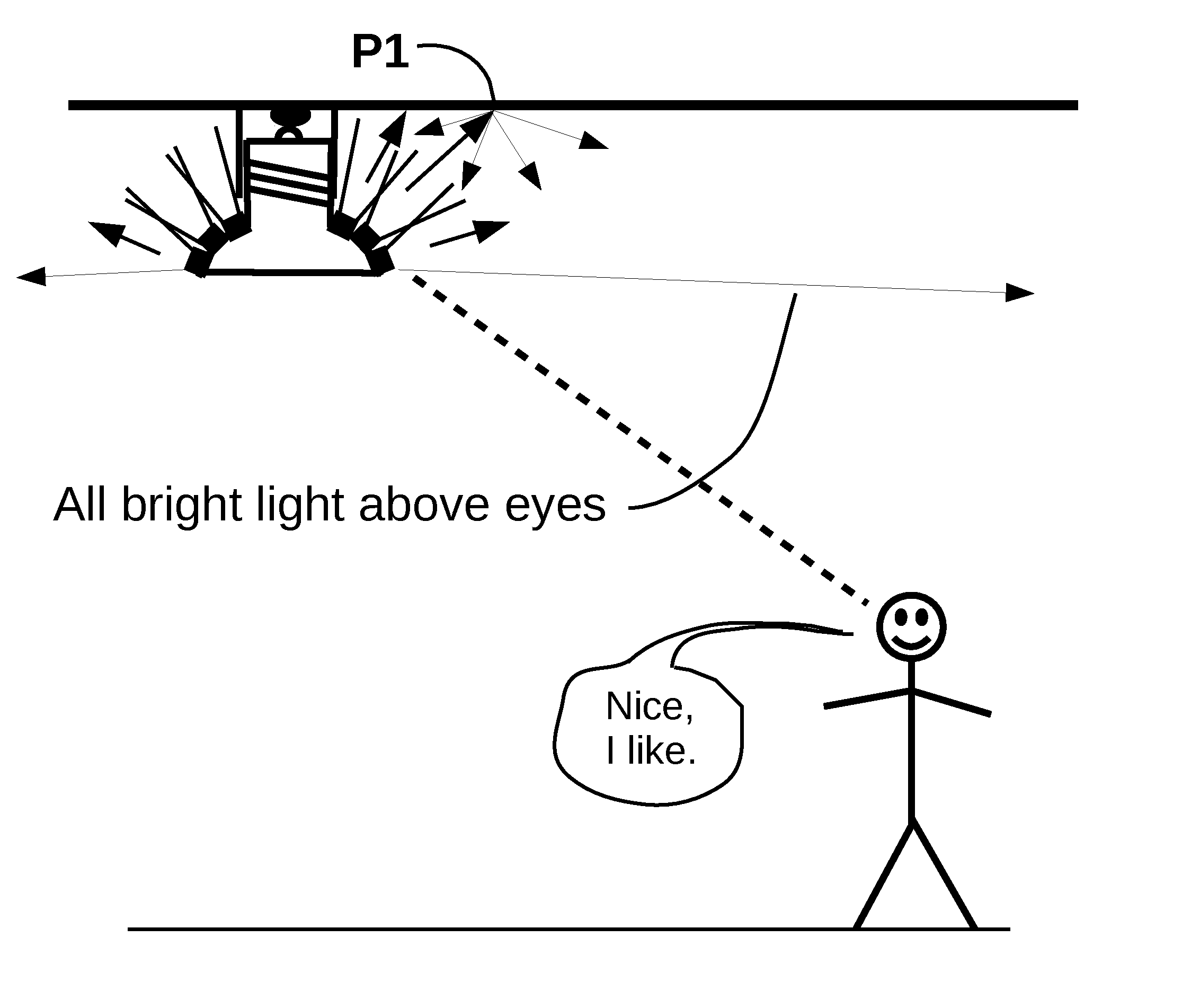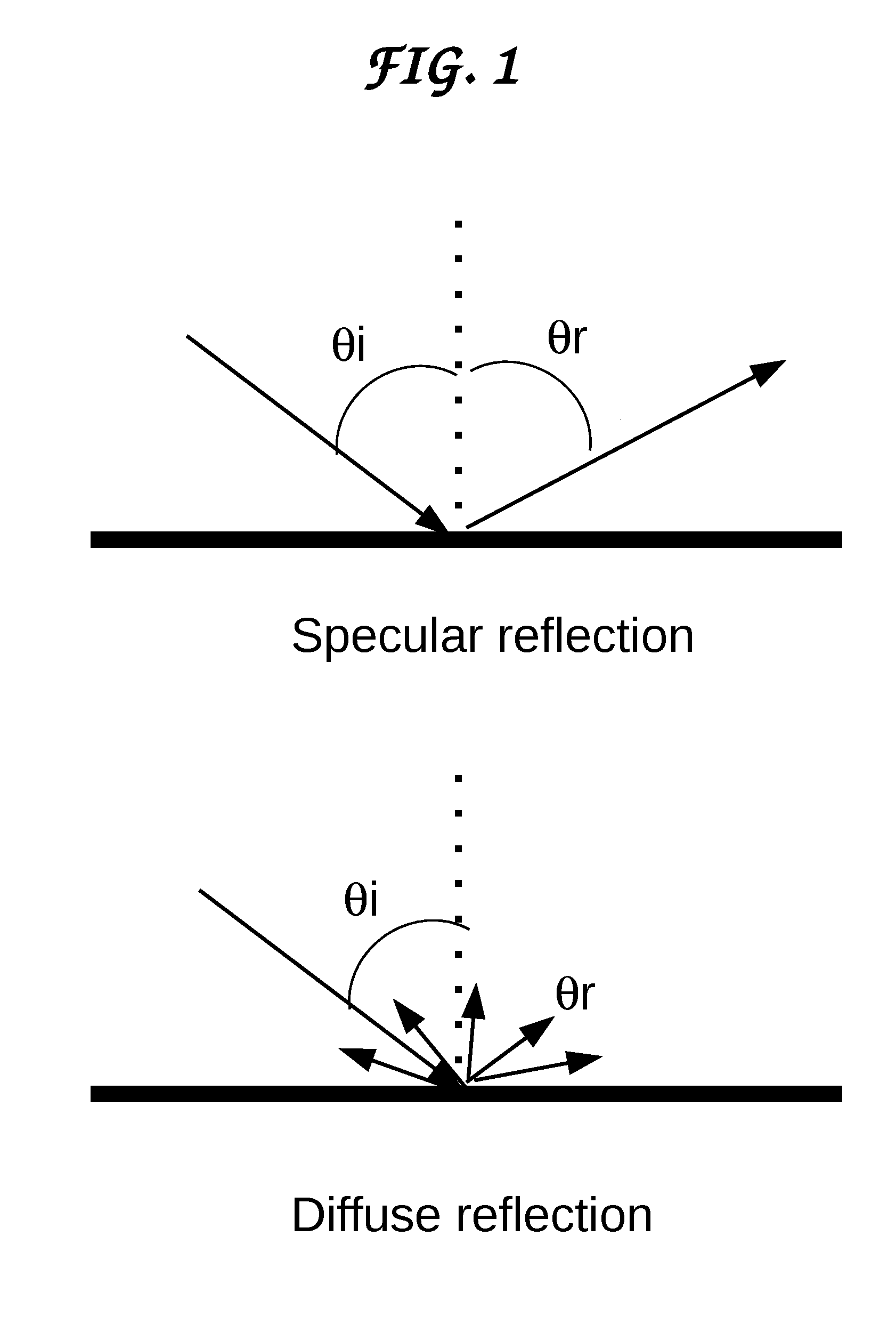Method and means to evenly distribute ambient illumination and to avoid bright LED beam directly into human eyes
a technology of ambient illumination and led beams, applied in the field of light and energy efficiency, can solve the problems of short life of light bulbs, designers failing to adapt to new designs, and reducing energy efficiency, so as to reduce system energy efficiency, avoid light absorption, and increase the overall energy efficiency of light elements.
- Summary
- Abstract
- Description
- Claims
- Application Information
AI Technical Summary
Benefits of technology
Problems solved by technology
Method used
Image
Examples
embodiment
Preferred Embodiment
FIGS. 3 Through 3f and 9
[0077]This main embodiment is described for use with the Edison-screw E26-E27 incandescent bulb, but the same principles apply for other standards for light producing devices, as the long tubular fluorescent that dominates the office, school and commercial sectors, or the halogen lights, and others. Glancing quickly at FIGS. 3a, 3b, 3c, and 3d, the reader will get the flavor of this brilliant invention, which offers three entangled advantages: (1) to obviate the need for the frosted glass / plastic larger surrounding container around the incandescent light bulb, which also absorb light and therefore contribute to energy loss (using the accepted language, because, of course that energy is never lost in the scientific meaning of it), (2) to prevent bright lights into the eyes of humans around them, and (3) to better spread the illumination from a larger source, thereby decreasing shadows, because using our invention the light reaching any obje...
PUM
 Login to View More
Login to View More Abstract
Description
Claims
Application Information
 Login to View More
Login to View More - R&D
- Intellectual Property
- Life Sciences
- Materials
- Tech Scout
- Unparalleled Data Quality
- Higher Quality Content
- 60% Fewer Hallucinations
Browse by: Latest US Patents, China's latest patents, Technical Efficacy Thesaurus, Application Domain, Technology Topic, Popular Technical Reports.
© 2025 PatSnap. All rights reserved.Legal|Privacy policy|Modern Slavery Act Transparency Statement|Sitemap|About US| Contact US: help@patsnap.com



